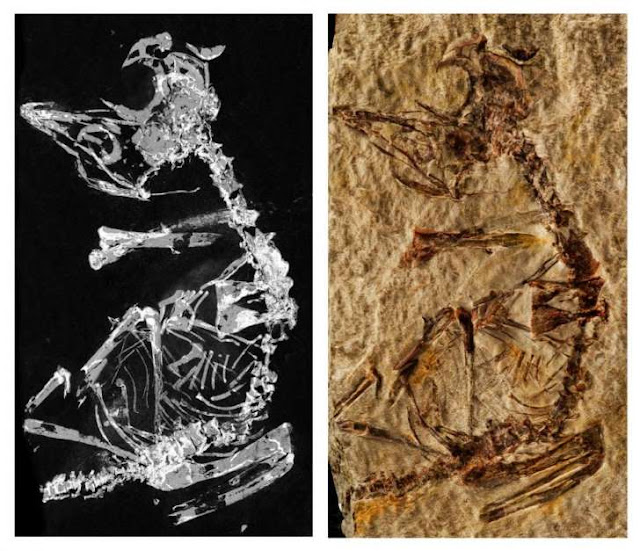 |
| Fossil baby bird |
A tiny, 127-million-year-old fossilized baby bird has given scientists a rare window into avian evolution. Less than two inches long, the specimen is one of the smallest ever discovered from the age of dinosaurs.
Clues to secrets of the bird’s short life—how much attention it needed from its parents and whether it could fly—are held in its tiny bones.
Critical stage of bone formation
The hatchling from the Enantiornithes group of prehistoric birds died at a critical stage of bone formation. Frozen in time, it shines a light on avian evolution as a whole, researchers said.
"The evolutionary diversification of birds has resulted in a wide range of hatchling developmental strategies and important differences in their growth rates,” researcher Fabien Knoll explained in a statement. “By analysing bone development we can look at a whole host of evolutionary traits."
Knoll, from the University of Manchester, U.K., led a study team evaluating the fossil. Their results were published Monday in Nature Communications.
Less than three ounces
The tiny bird measures less than two inches long and would have weighed only three ounces at its death. After millions of years in the Early Cretaceous deposits of Las Hoyas, Spain, the fossilized bird was missing only its feet, hands and the tip of its tail.
The team used synchrotron radiation to image the bird at an extremely-detailed submicron level. They found the hatchling’s sternum was mostly cartilage and had not become the solid bone needed for flight.
 |
Bone formation patterns show the bird’s bones were still developing. However, this may not have held the cute little creature back. Much like modern birds, ancient avians are likely to have grown up with diverse developmental strategies.
Today, for example, love birds rely on their parents from birth, while chickens are highly independent or “precocial.”
Study co-author Luis Chiappe from the LA Museum of Natural History added: “This new discovery, together with others from around the world, allows us to peek into the world of ancient birds that lived during the age of dinosaurs.
“It is amazing to realise how many of the features we see among living birds had already been developed more than 100 million years ago.”



